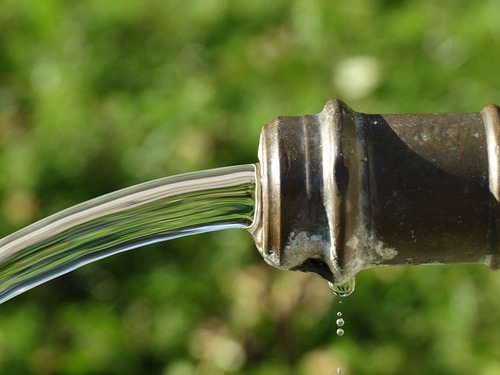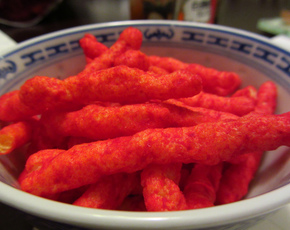Is Tap Water Bad For You?
Short answer
Although tap water undergoes treatment, it may still contain contaminants that are extremely harmful to the body. Tap water should be processed through a filtration system to further guarantee safety.
Recommended Alternative
A fairly even ratio of beneficial and harmful qualities. Moderation is important. Very general topics that can lean towards both sides of the spectrum will be placed here as well. Rice, for example, can be good or bad depending on the type.
View Full Grading System
Category 'A'
Very healthy and numerous health benefits. Side effects are rare. Things rated an 'A+' are typically necessary for survival (for example, water).
Very healthy and numerous health benefits. A few harmful qualities may be associated, but only under certain circumstances such as an allergic reaction.
Very healthy and numerous health benefits. Harmful qualities may be associated, but aren't usually serious.
It is important to note that even the best things in life can become bad in immoderate amounts. So, although something may be rated an 'A+', overconsumption/overdoing can bring unwanted effects.
Category 'B'
Very beneficial to your health. Things rated a 'B+' may have a few harmful qualities to pay attention to.
Overall beneficial to your health. Things rated a 'B' may have some harmful qualities to pay attention to.
More beneficial to your health than not. However, harmful qualities are most likely associated and shouldn't be overlooked.
The main difference between category 'A' and category 'B' is the harmful qualities typically present in 'B' items. Serious side effects are usually uncommon, but are still possible and should be taken note of.
Category 'C'
Both beneficial and harmful qualities associated. Things rated a 'C+' are typically a bit more on the beneficial side. Still, moderation is important.
A fairly even ratio of beneficial and harmful qualities. Moderation is important. Very general topics that can lean towards both sides of the spectrum will be placed here as well. Rice, for example, can be good or bad depending on the type.
More harmful than beneficial. Side effects are common, especially when consumed/done excessively. Moderation is very important.
Category 'C' usually denotes to both good and bad qualities. When it comes to this category, it is important to keep this word in mind: moderation.
Category 'D'
Harmful to your health. Although benefits may be associated, the bad most likely outweighs the good. Moderation is very important.
Harmful to your health. A few benefits may be associated, but the bad outweighs the good. Moderation is extremely important.
Harmful to your health. Very few, if any, benefits are present. Things in this category should be avoided as much as possible.
Category 'D' is typically for things that are more harmful than beneficial. While consuming/doing something unhealthy once in a blue moon shouldn't hurt, we definitely recommend eliminating 'D' items as a regular part of your routine/diet.
Category 'F'
Category 'F' is for things that fail to bring anything beneficial to the table, and are very harmful to your health. We recommend completely avoiding anything in this category. Long-term side effects of 'F' items are usually very serious.
Category 'N'
'N' stands for neutral. Things placed into this category are generally (a) neither good nor bad for you, or (b) lack the necessary evidence to reach any conclusions.
Long answer
Tap water comes from varied sources such as boreholes, wells or from the municipality. In these sources, there are chemicals, bacteria and other contaminants that are harmful to the human body. To ensure that the water is fit for human consumption, the Municipal heavily treats it through the addition of chemicals to disinfect and remove insoluble particles. Some of the chemicals used include liquefied chlorine, calcium hydroxide, aluminum sulphate, and fluoride. Consequently, the tap water ends up having a particular taste and at times even smell.
The authorities then carry out regular inspections to ensure that the municipal tap water meets the desired safety standards. Despite measures to treat and inspect the water, the process does not target each and every potential contaminant in the water. As a result, contaminants such as heavy metals, pathogens like E-coli and giardia, fuel byproducts and pesticides may still find their way into drinking glasses through the tap water. Some ingredients used to treat the water have side effects and can harm a person with a compromised immune system or who is suffering from chronic ailments.
It is worth noting that even after treatment, the water still passes through pipes where they are likely to get contaminated. It, therefore, begs the question, is tap water bad for you? Health experts advise treating the water further to eliminate any potentially toxic element that may still be present. The easiest way to do this is to use a basic water filter (see below).
Possible short-term side effects
Possible long-term side effects
- eroded tooth enamel
-
discolored teeth
-
encourage cancer cell growth
-
nerve, brain and kidney damage
-
decreased thyroid function
-
decreased immunity
Ingredients to be aware of
Benefits
Healthier alternatives
Our Wellness Pick
(what is this?)
Brita Water Filter Replacements
- Reduces chlorine taste/odor
- Two-month filter life
- Enhances water quality
- Convenient 4-pack
- Compatible with Brita systems
Learn More!
Please turn your Ad Blocker off to see this content. Thank you!
Thank you for your feedback!
Written by Rachel Adams
Published on: 01-07-2016
Last updated: 12-01-2023
Thank you for your feedback!
Written by Rachel Adams
Published on: 01-07-2016
Last updated: 12-01-2023

 Approved by
Approved by 















